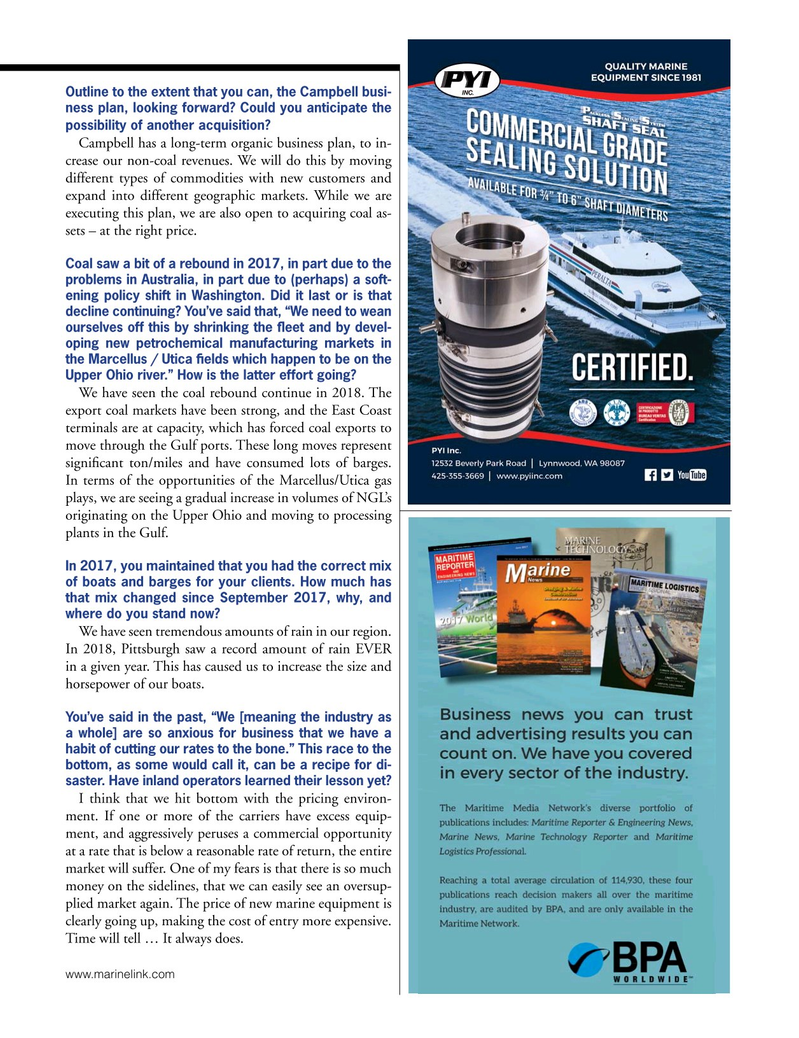
Page 23: of Marine News Magazine (March 2019)
Pushboats, Tugs & Assist Vessels
Read this page in Pdf, Flash or Html5 edition of March 2019 Marine News Magazine
Outline to the extent that you can, the Campbell busi- ness plan, looking forward? Could you anticipate the possibility of another acquisition?
Campbell has a long-term organic business plan, to in- crease our non-coal revenues. We will do this by moving different types of commodities with new customers and expand into different geographic markets. While we are executing this plan, we are also open to acquiring coal as- sets – at the right price.
Coal saw a bit of a rebound in 2017, in part due to the problems in Australia, in part due to (perhaps) a soft- ening policy shift in Washington. Did it last or is that decline continuing? You’ve said that, “We need to wean ourselves off this by shrinking the feet and by devel- oping new petrochemical manufacturing markets in the Marcellus / Utica felds which happen to be on the
Upper Ohio river.” How is the latter effort going?
We have seen the coal rebound continue in 2018. The export coal markets have been strong, and the East Coast terminals are at capacity, which has forced coal exports to move through the Gulf ports. These long moves represent signifcant ton/miles and have consumed lots of barges.
In terms of the opportunities of the Marcellus/Utica gas plays, we are seeing a gradual increase in volumes of NGL’s originating on the Upper Ohio and moving to processing plants in the Gulf.
In 2017, you maintained that you had the correct mix of boats and barges for your clients. How much has that mix changed since September 2017, why, and where do you stand now?
We have seen tremendous amounts of rain in our region.
In 2018, Pittsburgh saw a record amount of rain EVER in a given year. This has caused us to increase the size and horsepower of our boats.
You’ve said in the past, “We [meaning the industry as a whole] are so anxious for business that we have a habit of cutting our rates to the bone.” This race to the bottom, as some would call it, can be a recipe for di- saster. Have inland operators learned their lesson yet?
I think that we hit bottom with the pricing environ- ment. If one or more of the carriers have excess equip- ment, and aggressively peruses a commercial opportunity at a rate that is below a reasonable rate of return, the entire market will suffer. One of my fears is that there is so much money on the sidelines, that we can easily see an oversup- plied market again. The price of new marine equipment is clearly going up, making the cost of entry more expensive.
Time will tell … It always does.
www.marinelink.com

 22
22

 24
24
